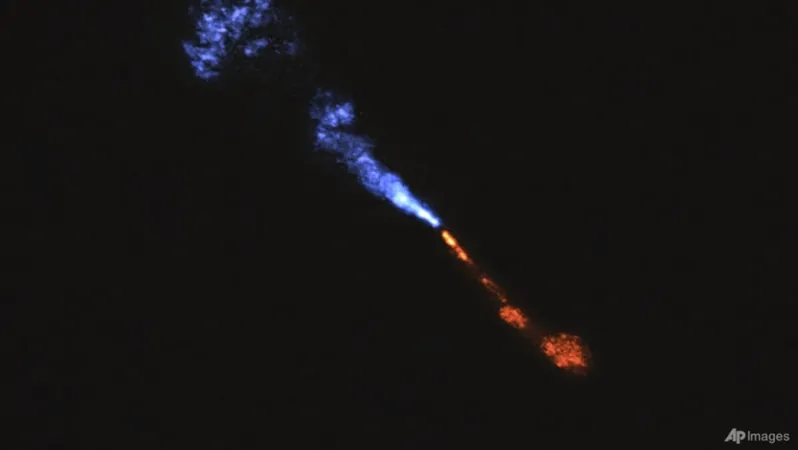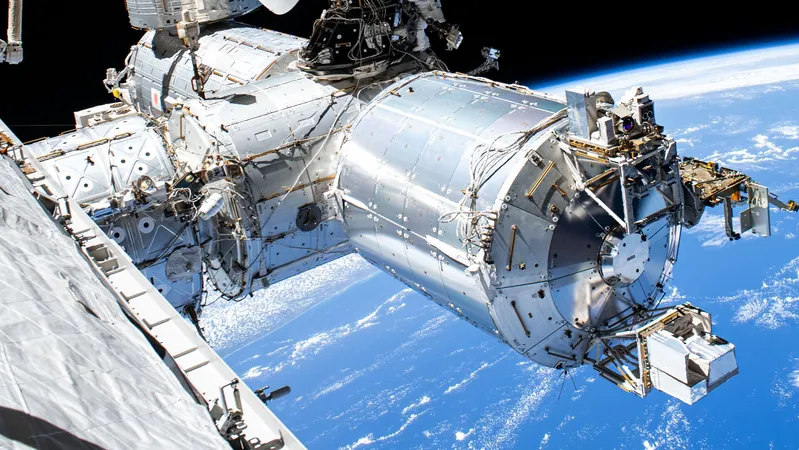
Astronomers Capture Stunning First Glimpse of Planet Formation in Distant Solar System
2025-07-16
Author: Siti
A Historic Discovery in Cosmic Evolution
In a groundbreaking achievement, astronomers have witnessed the birth of a solar system, unlocking secrets about the origins of our own planetary neighborhood. This remarkable event was recorded around a young star known as HOPS 315, located roughly 1,300 light-years away in the captivating Orion Nebula.
The Making of Planets: From Dust to Destiny
Around young stars like HOPS 315, vast spirals of gas and dust, known as protoplanetary discs, spin and swirl. These discs are fertile grounds for planet formation, where tiny crystalline minerals, rich in silicon monoxide, begin to cluster together. Over time, these globs accumulate into larger bodies known as planetesimals, setting the stage for the creation of planets like Earth and Jupiter.
Insights into Our Cosmic Roots
This discovery draws a parallel to our solar system, where ancient meteorites are thought to have carried similar minerals that sparked the formation of our planets. Researchers are now shining a light on similar signs of early planet formation in the disc encircling HOPS 315, shedding new light on how solar systems like ours might have begun.
Shining a Light on Formation: Telescopes Provide Clarity
The groundbreaking findings, featured in the esteemed journal Nature, were made possible by the powerful James Webb Space Telescope, which first detected the presence of these minerals. Following this, astronomers turned to the European Southern Observatory’s ALMA telescope in Chile to precisely map their locations within the disc.
A Mirror to Our Past
Research indicates that these clustered minerals are located in a narrow region reminiscent of our own asteroid belt, giving scientists a unique window into the process that formed Earth and its sibling planets. As co-author Merel van 't Hoff of Purdue University puts it, "We are witnessing a system that reflects the earliest moments of our own solar system's formation, providing invaluable insights into our cosmic origins."


 Brasil (PT)
Brasil (PT)
 Canada (EN)
Canada (EN)
 Chile (ES)
Chile (ES)
 Česko (CS)
Česko (CS)
 대한민국 (KO)
대한민국 (KO)
 España (ES)
España (ES)
 France (FR)
France (FR)
 Hong Kong (EN)
Hong Kong (EN)
 Italia (IT)
Italia (IT)
 日本 (JA)
日本 (JA)
 Magyarország (HU)
Magyarország (HU)
 Norge (NO)
Norge (NO)
 Polska (PL)
Polska (PL)
 Schweiz (DE)
Schweiz (DE)
 Singapore (EN)
Singapore (EN)
 Sverige (SV)
Sverige (SV)
 Suomi (FI)
Suomi (FI)
 Türkiye (TR)
Türkiye (TR)
 الإمارات العربية المتحدة (AR)
الإمارات العربية المتحدة (AR)